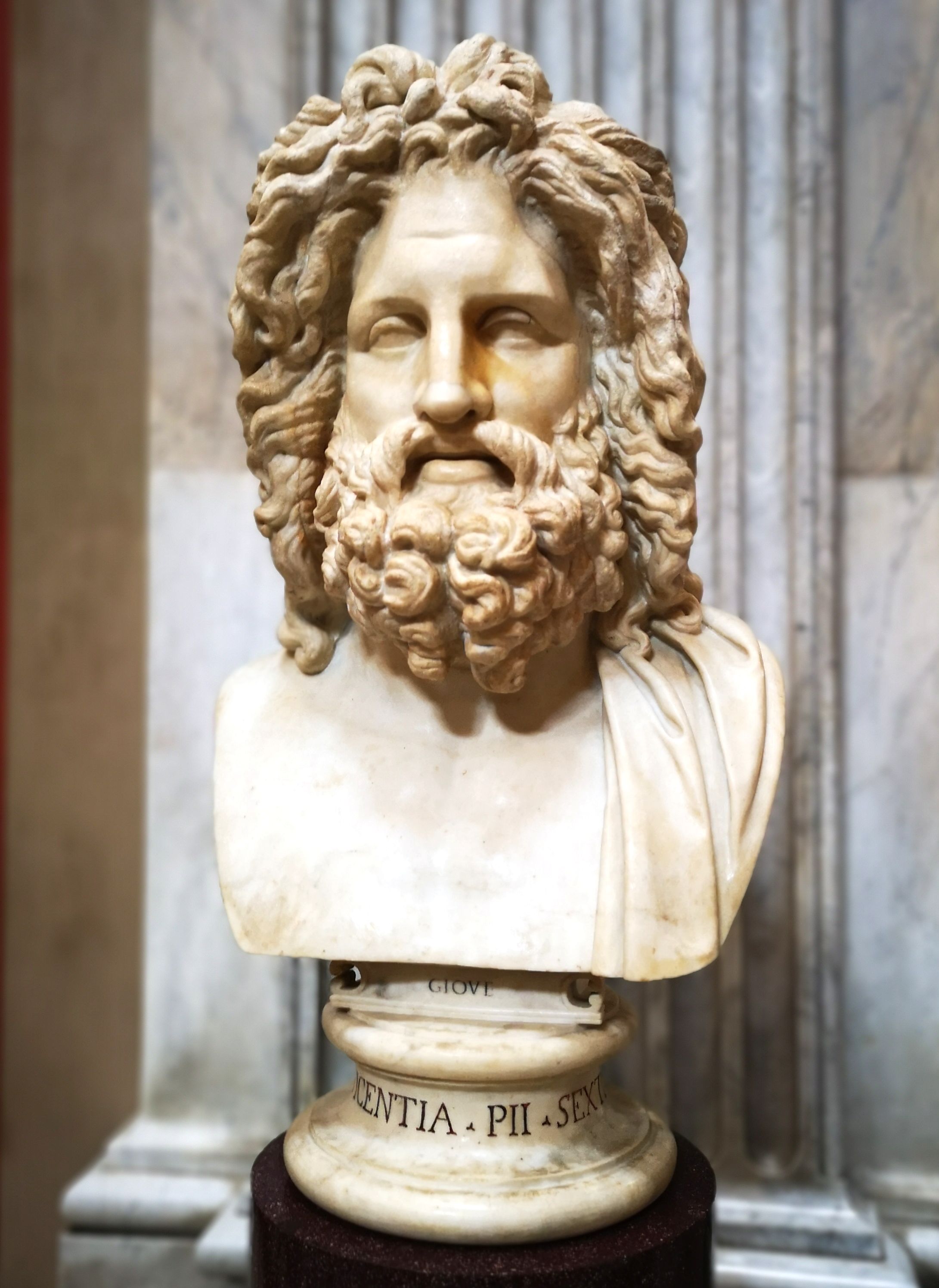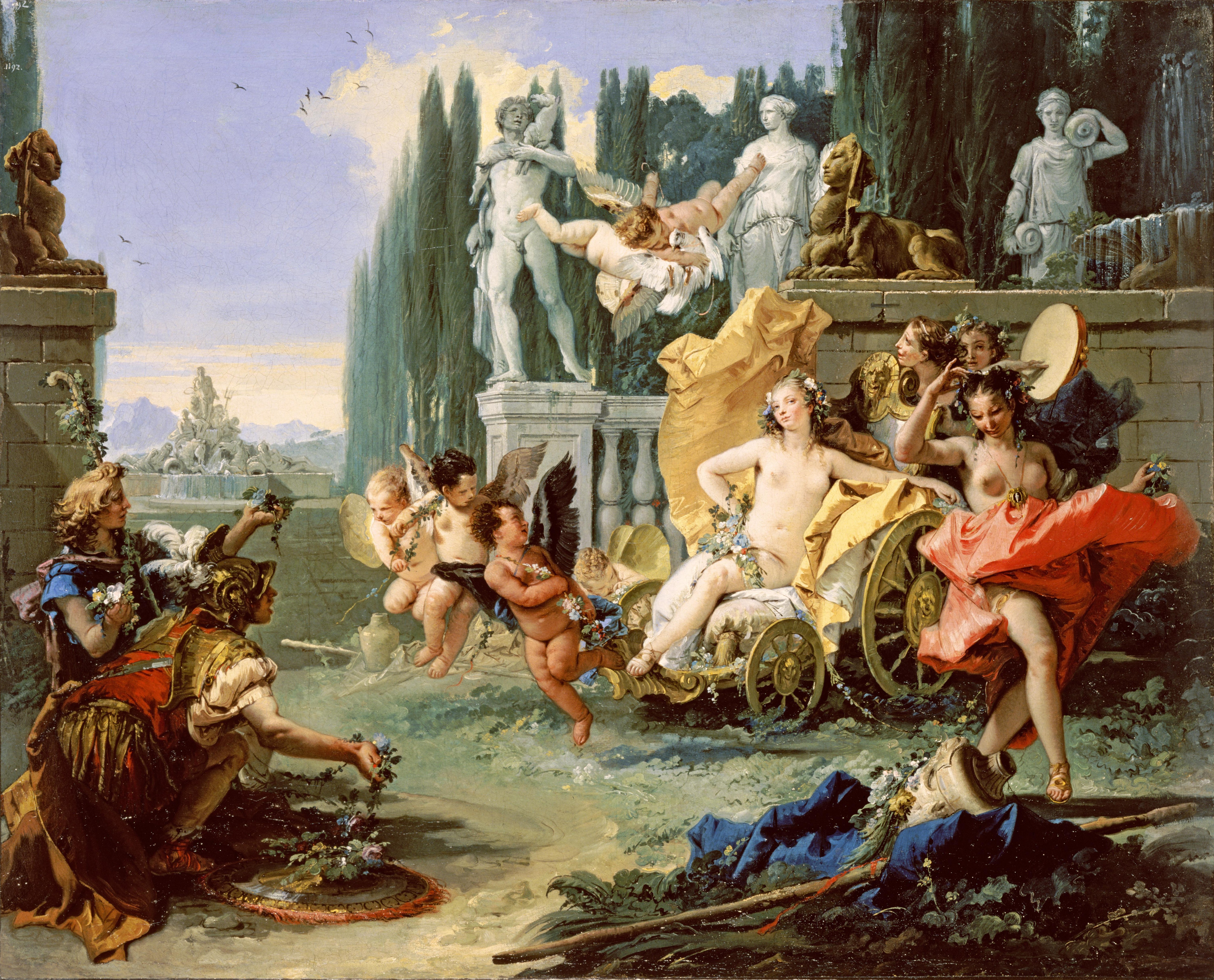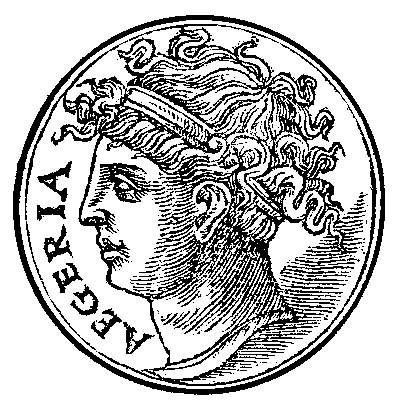|
Ancile
In ancient Rome, the ''ancilia'' (Latin, singular ''ancile'') were twelve sacred shields kept in the Temple of Mars. According to legend, one divine shield fell from heaven during the reign of Numa Pompilius, the second king of Rome. He ordered eleven copies made to confuse would-be thieves, since the original shield was regarded as one of the '' pignora imperii (pledges of rule)'', sacred guarantors that perpetuated Rome as a sovereign entity. The shields are identified by their distinct 'figure of eight' shape which is said to be derived from Mycenaean art. As described by Plutarch, the shape of the ancile is a standard shield, neither round or oval, which has curved indentations on both sides. The ancilia were kept by the Salii, a body of twelve priests instituted for that purpose by Numa. The Salii wielded them ritually in a procession throughout March. According to Varro, the ancilia may have also made an appearance in the Armilustrium (‘Purification of the Arms’) in O ... [...More Info...] [...Related Items...] OR: [Wikipedia] [Google] [Baidu] |
Numa Pompilius
Numa Pompilius (; 753–672 BC; reigned 715–672 BC) was the legendary second king of Rome, succeeding Romulus Romulus () was the legendary foundation of Rome, founder and King of Rome, first king of Ancient Rome, Rome. Various traditions attribute the establishment of many of Rome's oldest legal, political, religious, and social institutions to Romulus ... after a one-year interregnum. He was of Sabine origin, and many of Rome's most important religious and political institutions are attributed to him, such as the Roman calendar, Vestal Virgins, the cult of Mars, the cult of Jupiter, the cult of Romulus, and the office of ''pontifex maximus''. Genealogy According to Plutarch, Numa was the youngest of Pomponius's four sons, born on the day of Rome's founding (traditionally, 21 April 753 BC). He lived a severe life of discipline and banished all luxury from his home. Titus Tatius, king of the Sabines and a colleague of Romulus, gave in marriage his only daughter, Tatia (wi ... [...More Info...] [...Related Items...] OR: [Wikipedia] [Google] [Baidu] |
Jupiter (mythology)
Jupiter ( la, Iūpiter or , from Proto-Italic "day, sky" + "father", thus " sky father" Greek: Δίας or Ζεύς), also known as Jove ( gen. ''Iovis'' ), is the god of the sky and thunder, and king of the gods in ancient Roman religion and mythology. Jupiter was the chief deity of Roman state religion throughout the Republican and Imperial eras, until Christianity became the dominant religion of the Empire. In Roman mythology, he negotiates with Numa Pompilius, the second king of Rome, to establish principles of Roman religion such as offering, or sacrifice. Jupiter is usually thought to have originated as a sky god. His identifying implement is the thunderbolt and his primary sacred animal is the eagle, which held precedence over other birds in the taking of auspices and became one of the most common symbols of the Roman army (see Aquila). The two emblems were often combined to represent the god in the form of an eagle holding in its claws a thunderbolt, frequen ... [...More Info...] [...Related Items...] OR: [Wikipedia] [Google] [Baidu] |
Mamurius Veturius
In ancient Roman religion, the Mamuralia or ''Sacrum Mamurio'' ("Rite for Mamurius") was a festival held on March 14 or 15, named only in sources from late antiquity. According to Joannes Lydus, an old man wearing animal skins was beaten ritually with sticks. The name is connected to Mamurius Veturius, who according to tradition was the craftsman who made the ritual shields ('' ancilia'') that hung in the temple of Mars. Because the Roman calendar originally began in March, the ''Sacrum Mamurio'' is usually regarded as a ritual marking the transition from the old year to the new. It shares some characteristics with scapegoat or ''pharmakos'' ritual. The craft of Mamurius According to legend, Mamurius was commissioned by Numa, second king of Rome, to make eleven shields identical to the sacred ''ancile'' that fell from the heavens as a pledge of Rome's destiny to rule the world. The ''ancile'' was one of the sacred guarantors of the Roman state ''( pignora imperii)'', and the repli ... [...More Info...] [...Related Items...] OR: [Wikipedia] [Google] [Baidu] |
Fasti (poem)
The ''Fasti'' ( la, Fāstī , "the Calendar"), sometimes translated as ''The Book of Days'' or ''On the Roman Calendar'', is a six-book Latin poem written by the Roman poet Ovid and published in AD 8. Ovid is believed to have left the ''Fasti'' incomplete when he was exiled to Tomis by the emperor Augustus in 8 AD. Written in elegiac couplets and drawing on conventions of Greek and Latin didactic poetry, the ''Fasti'' is structured as a series of eye-witness reports and interviews by the first-person '' vates'' ("poet-prophet" or "bard") with Roman deities, who explain the origins of Roman holidays and associated customs—often with multiple aetiologies. The poem is a significant, and in some cases unique, source of fact in studies of religion in ancient Rome; and the influential anthropologist and ritualist J.G. Frazer translated and annotated the work for the Loeb Classical Library series. Each book covers one month, January through June, of the Roman calendar, and wa ... [...More Info...] [...Related Items...] OR: [Wikipedia] [Google] [Baidu] |
Ovid
Pūblius Ovidius Nāsō (; 20 March 43 BC – 17/18 AD), known in English as Ovid ( ), was a Roman poet who lived during the reign of Augustus. He was a contemporary of the older Virgil and Horace, with whom he is often ranked as one of the three canonical poets of Latin literature. The Imperial scholar Quintilian considered him the last of the Latin love elegists.Quint. ''Inst.'' 10.1.93 Although Ovid enjoyed enormous popularity during his lifetime, the emperor Augustus banished him to Tomis, a Dacian province on the Black Sea, where he remained a decade until his death. Overview A contemporary of the older poets Virgil and Horace, Ovid was the first major Roman poet to begin his career during Augustus's reign. Collectively, they are considered the three canonical poets of Latin literature. The Imperial scholar Quintilian described Ovid as the last of the Latin love elegists.Quint. ''Inst.'' 10.1.93 He enjoyed enormous popularity during his lifetime, but the emperor ... [...More Info...] [...Related Items...] OR: [Wikipedia] [Google] [Baidu] |
Odysseus
Odysseus ( ; grc-gre, Ὀδυσσεύς, Ὀδυσεύς, OdysseúsOdyseús, ), also known by the Latin variant Ulysses ( , ; lat, UlyssesUlixes), is a legendary Greek king of Ithaca and the hero of Homer's epic poem the ''Odyssey''. Odysseus also plays a key role in Homer's ''Iliad'' and other works in that same epic cycle. Son of Laërtes and Anticlea, husband of Penelope, and father of Telemachus and Acusilaus, Odysseus is renowned for his intellectual brilliance, guile, and versatility (''polytropos''), and is thus known by the epithet Odysseus the Cunning ( grc-gre, μῆτις, mêtis, cunning intelligence). He is most famous for his '' nostos'', or "homecoming", which took him ten eventful years after the decade-long Trojan War. Name, etymology, and epithets The form ''Odys(s)eus'' is used starting in the epic period and through the classical period, but various other forms are also found. In vase inscriptions, we find the variants ''Oliseus'' (), ''Olyseus' ... [...More Info...] [...Related Items...] OR: [Wikipedia] [Google] [Baidu] |
Egeria (mythology)
Egeria (, grc, Ἠγερία) was a nymph attributed a legendary role in the early history of Rome as a divine consort and counselor of Numa Pompilius, the second king of Rome, to whom she imparted laws and rituals pertaining to ancient Roman religion. Her name is used as an eponym for a female advisor or counselor. Origin and etymology Egeria may predate Roman myth: she could have been of Italic origin in the sacred forest of Aricia in Latium, her immemorial site, which was equally the grove of Diana Nemorensis ("Diana of Nemi"). At Aricia there was also a Manius Egerius, a male counterpart of Egeria. The name ''Egeria'' has been diversely interpreted. Georges Dumézil proposed it came from ''ē-gerere'' ("bear out"), suggesting an origin from her childbirth role. It may mean "of the black poplar" (Greek αἴγειρος, ''aigeiros''). Her role as prophetess and author of "sacred books" would compare her to the Etruscan figure of Vegoia (alleged author among other th ... [...More Info...] [...Related Items...] OR: [Wikipedia] [Google] [Baidu] |
Nymph
A nymph ( grc, νύμφη, nýmphē, el, script=Latn, nímfi, label=Modern Greek; , ) in ancient Greek folklore is a minor female nature deity. Different from Greek goddesses, nymphs are generally regarded as personifications of nature, are typically tied to a specific place or landform, and are usually depicted as maidens. They were not necessarily immortal, but lived much longer than human beings. They are often divided into various broad subgroups, such as the Meliae (ash tree nymphs), the Dryads (oak tree nymphs), the Naiads (freshwater nymphs), the Nereids (sea nymphs), and the Oreads (mountain nymphs). Nymphs are often featured in classic works of art, literature, mythology, and fiction. Since the Middle Ages, nymphs have been sometimes popularly associated or even confused with fairies. Etymology The Greek word has the primary meaning of "young woman; bride, young wife" but is not usually associated with deities in particular. Yet the etymology of the noun rem ... [...More Info...] [...Related Items...] OR: [Wikipedia] [Google] [Baidu] |
Palladium (mythology)
In Greek and Roman mythology, the Palladium or Palladion (Greek Παλλάδιον (Palladion), Latin ''Palladium'') was a cult image of great antiquity on which the safety of Troy and later Rome was said to depend, the wooden statue (''xoanon'') of Pallas Athena that Odysseus and Diomedes stole from the citadel of Troy and which was later taken to the future site of Rome by Aeneas. The Roman story is related in Virgil's ''Aeneid'' and other works. Rome possessed an object regarded as the actual Palladium for several centuries; it was in the care of the Vestal Virgins for nearly all this time. Since around 1600, the word palladium has been used figuratively to mean anything believed to provide protection or safety, and in particular in Christian contexts a sacred relic or icon believed to have a protective role in military contexts for a whole city, people or nation. Such beliefs first become prominent in the Eastern church in the period after the reign of the Byzantine Empero ... [...More Info...] [...Related Items...] OR: [Wikipedia] [Google] [Baidu] |
Pelta
A ''peltast'' ( grc-gre, πελταστής ) was a type of light infantryman, originating in Thrace and Paeonia, and named after the kind of shield he carried. Thucydides mentions the Thracian peltasts, while Xenophon in the Anabasis distinguishes the Thracian and Greek peltast troops. The peltast often served as a skirmisher in Hellenic and Hellenistic armies. In the Medieval period, the same term was used for a type of Byzantine infantryman. Description ''Pelte'' shield ''Peltasts'' carried a crescent-shaped wicker shield called a "''pelte''" (Ancient Greek grc, πέλτη, peltē, label=none; Latin: ) as their main protection, hence their name. According to Aristotle, the ''pelte'' was rimless and covered in goat- or sheepskin. Some literary sources imply that the shield could be round, but in art it is usually shown as crescent-shaped. It also appears in Scythian art and may have been a common type in Central Europe. The shield could be carried with a central strap a ... [...More Info...] [...Related Items...] OR: [Wikipedia] [Google] [Baidu] |







